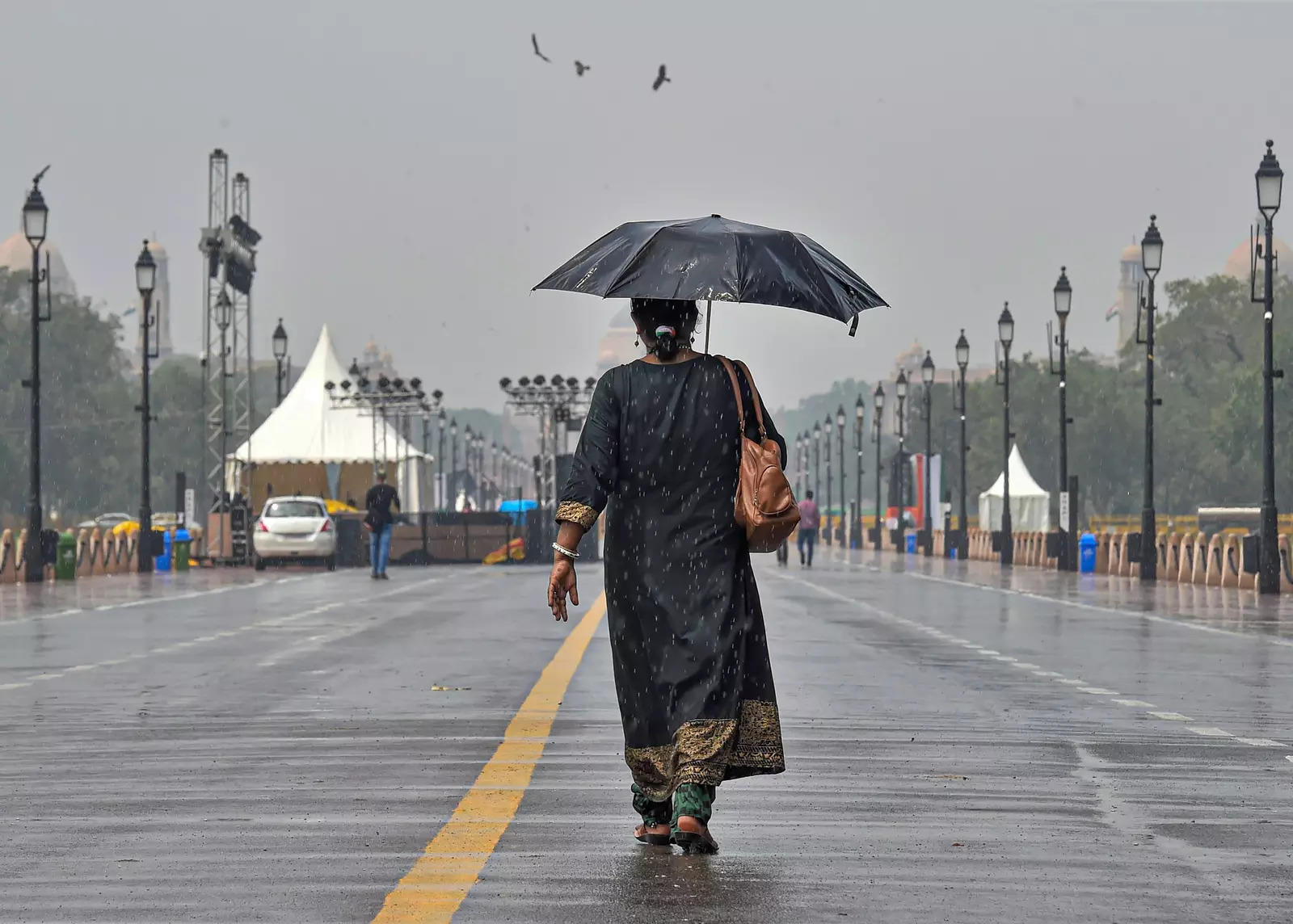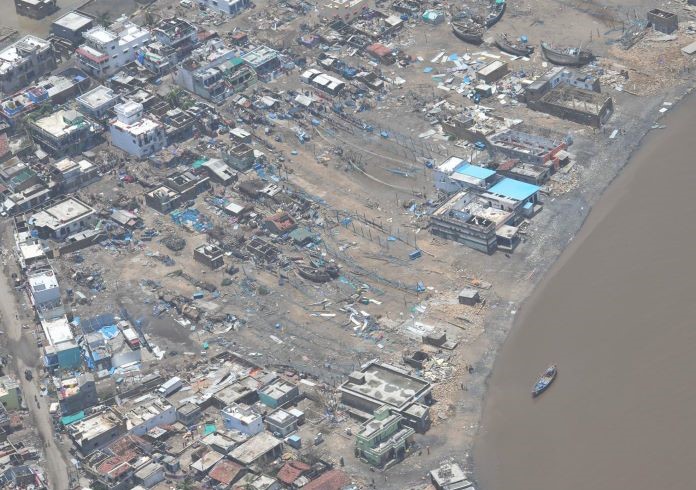India Under Heat: Role of Climate Change Factors Behind Extreme Temperatures
India grapples with an intense heatwave, climate change continues to play a key role
By Editorial Team / Apr 30, 2024

Source: AI Generated Image
Spells of intense heat waves have engulfed several parts of India. Ever since the beginning of the Summer season in April, heat waves had started making appearances. At present, most parts of the country are battling extreme hot weather conditions. East India which includes Bihar, parts of West Bengal, Andhra Pradesh, and Odisha, has been the worst affected, where punishing heat waves have been consistent ever since April 15.
Mercury has been settling between 40℃-45℃ across Central and East India. Besides this, high levels of humidity in coastal cities have made the heat unbearable.
The country's nodal weather agency, India Meteorological Department, has predicted more than double the normal heat wave days from April to June. According to the latest report by the World Meteorological Organisation (WMO), the impact of heatwaves became more severe across Asia including India. Notedly, heat waves have claimed more lives in India than other natural hazards, except for tropical cyclones.
Rising temperatures all over India
The news comes at a crucial time as the world’s largest democracy is going out to vote. The seven-phase polls began on April 19 and ends on June 1, coinciding with the peak of heatwave season. Heatwave threatens tens of thousands expected in public rallies, polling staff, and queueing up at polling booths. News of heat waves affecting people is already out in national and international dailies.
Union Minister Nitin Gadkari fainted while addressing a campaign rally in Maharashtra on April 24 due to heat stress. Kerala, which is under the grip of a record heatwave, has reported two deaths due to heat. According to Kerala State Disaster Management Authority (KSDMA), around 413 heat-related health issues like sunburn, rashes, and heat stroke cases, have been reported until April 22.
Odisha, which has been amidst a severe heatwave for the last 15 days now, has also recorded one death and around 124 hospitalized due to heat-related illness across 16 districts.
2023 was the warmest year on record across the globe. Last year, on April 16, a heatwave claimed 13 lives at a public event in Navi Mumbai and over 600 hospitalizations were reported.
It is expected to be worse than ever before as the country is likely to experience 10 to 20 days of heat waves in different parts against a normal of 4 to 8 days. The most prone areas to increased heat waves would be Gujarat, Madhya Maharashtra, and north Karnataka followed by Rajasthan, Madhya Pradesh, North Chhattisgarh, Odisha, and Andhra Pradesh.
May is considered to be the peak month for heatwave and scientists are not predicting much respite in the coming days.
“We are already giving a red alert for heat waves for expected places. Maximum temperatures would be settling on the higher end but high humidity levels will further worsen the situation. Another contributing factor is the rise in minimum temperatures, which have been settling on the higher side for the last few days. Also, hot and humid conditions have prevailed over the region since April 16. This continuous rise has also led to a warmer atmosphere,” said Dr Naresh Kumar, Senior Scientist, India Meteorological Department.
What is a Heatwave?
A heatwave is declared if the maximum temperature of a station reaches at least 40°C or more for Plains and is above normal by 4 degrees. For coastal stations, the threshold is 37°C or more, and at least 30°C or more for the Hilly region. If the day maximums are 5 degrees above the normal average, they can qualify as severe heat waves. Invariably severe heatwave is declared if the maximum temperature reaches 45°C or more.
However, heatwaves can be categorized into two types: dry heatwave and humid heatwave. Dry heatwaves are relatively harmless as compared to the ones with high humidity levels which can significantly endanger human life.
“While Northwest and adjoining parts of Central India witness higher temperatures than the rest of the country, soaring mercury across coastal areas can be more torturing as well as dangerous for people, especially vulnerable ones. At this rate, heat-related health impacts will multiply manifolds. Soaring temperatures across coastal cities can turn out to be fatal as people are not used to such weather conditions,” said Mahesh Palawat, Vice President of Meteorology and Climate Change, at Skymet Weather.
The human body normally cools itself by perspiration, or sweating, in which the water in the sweat evaporates and carries heat away from the body. However, when the relative humidity is high, the evaporation rate of sweat is reduced. This means heat is removed from the body at a lower rate, causing it to retain more heat than it would in dry air.
The role of humidity is measured by Heat Index (HI) which is an apparent temperature, combining air temperature and relative humidity to determine how hot it feels. Any increase in atmospheric moisture can account for a considerable fraction of the total increases in the HI. It is also known as the wet bulb temperature and 35°C can be considered an upper limit for human survivability.
Global Warming behind record heat every year
India has been struggling with the increasing heat stress for over a decade now. Persisting rises in average temperatures have changed the dynamics of weather patterns, resulting in the warming atmosphere ever.
Scientists across the world have been warming against the unprecedented rise in global warming. The planet has warmed far faster in the last 50 years than at any point in at least the past 2,000 years. Earth’s temperature has risen by an average of 0.11°F (0.06°C) per decade since 1850, or about 2°F in total. The rate of warming since 1982 is more than three times as fast: 0.36° F (0.20° C) per decade.
With this, the unusual heat has now become a common phenomenon. The 10 warmest years in the historical record have all occurred in the past decade (2014-2023). 2023 has been the warmest, superseding the year of 2016.
According to the combined data from NOAA and NASA, 2023 saw the highest global surface temperature in the 144-year record at 1.4°C (2.52°F) which was above the early industrial (1881-1910) baseline average.
How heat hits the people
Heat waves have claimed more lives in India than other natural hazards, with the exception of tropical cyclones. Both rural and urban populations are vulnerable to heat-related mortality and morbidity. However, individuals with lower degrees of education and socio-economic status, older individuals, and individuals living in communities with less green space are more susceptible to heat-related mortality. Besides, heat stress due to increased humidity and temperatures can significantly endanger human life.
Apart from health, heat waves also have a socio-economic impact as they lead to increased energy consumption, reduced crop yields, increased water loss, and intensified droughts or forest fires. Soaring mercury can cause disruptions in critical infrastructure networks and lower labour productivity.
According to a study, India currently loses around 259 billion hours annually due to the impacts of humid heat on labour, up from a previous estimate of 110 billion hours. In terms of changes, in the first 20 years of this century, India lost 25 billion more hours annually compared to the previous 20 years. Also, agricultural labour capacity in India would decrease by 17% if warming continues to 3°C and to 11% if emission cuts are accelerated across the country.
Heatwaves Elections Climate Change

